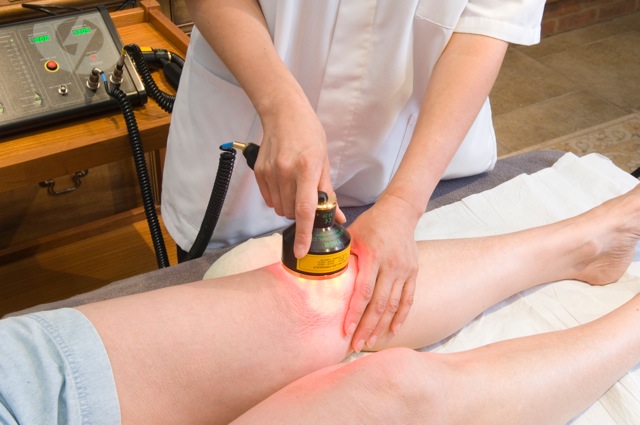The Best Guide To Photobiomodulation
Table of ContentsAbout PhotobiomodulationFacts About Photobiomodulation RevealedThe Greatest Guide To PhotobiomodulationThe Main Principles Of Photobiomodulation
Laser treatment is a clinical treatment that utilizes focused light to boost a process called. Throughout PBM, photons go into the tissue and connect with the cytochrome c complicated within mitochondria. This interaction activates an organic waterfall of occasions that brings about a boost in mobile metabolic rate, which can in addition to increase the recovery process.There is agreement that the application of a restorative dosage of light to impaired or useless tissue brings about a cellular feedback mediated by mitochondrial devices. Photobiomodulation. Studies have actually revealed that these changes can influence pain and inflammation, along with, tissue repair service
Changes in ATP, responsive oxygen varieties and nitric oxide follow light absorption by Cc, O. These results are redox state and dose dependent. In hypoxic or otherwise worried cells it has been revealed many times that complying with, nitric oxide is launched, ATP is increased and oxidative tension is lowered [27-31]

Some Known Factual Statements About Photobiomodulation
PBM gadgets have actually been removed for marketing by FDA through the Premarket Notification/510( k) procedure as adjunctive gadgets for the short-lived relief of discomfort. These clearances were based upon the presentation of professional data to sustain such cases (Photobiomodulation). In this therapy, a light resource is put near or in call with the skin, enabling the light power (photons) to penetrate tissue where it interacts with chromophores situated in cells leading to photophysical and photochemical changes that bring about modifications at the molecular, cellular and tissue degrees of the body
Surprisingly, recent research indicates that light can boost performance in normal cells and cells. The prospective applications of PBMT are countless and are being discovered experimentally at the fundamental science, pre-clinical and medical degree. The current professional uses are for the alleviation of pain and inflammation and the therapy of sports injuries.

The treatment specifications and number of sessions needed for PBMT depend on place and cause. PBMT normally needs greater than one therapy for ideal discomfort alleviation. It might take numerous therapies for the outcomes to end up being obvious. records that it can take anywhere from eight to 30 sessions for a treatment to be completely efficient, and some clients discover it required to undergo treatment 2 to four times each week.
10 Easy Facts About Photobiomodulation Described
Therapy parameters for PBMT were initially developed using cells artificial insemination and in small pet models. These therapy parameters usually had a low irradiance and fluence and functioned well for cutaneous applications. When clinicians started to make use of PBMT to treat structures that were located much deeper in the body, they made use of these parameters with negative results.
We currently comprehend that these negative research studies was because of inaccurate device and treatment specifications for transcutaneous therapy of much deeper frameworks. Current developments in laser find more info treatment tools and even more study right into the appropriate dosages have considerably boosted the outcomes of PBMT. For treating deep cells, the wavelength of light made use of identifies the depth of penetration into a tissue.
It is essential that a clinician utilizes the suitable wavelength of light and specifications to treat a condition. One wavelength and one collection of therapy specifications will not be efficient for all conditions. Negative negative effects have actually not been reported from the usage of PBMT (Photobiomodulation). Upgraded June 27, 2016Juanita j
Light therapy is a non-invasive therapy that works by increasing the ability of the cell to create power (ATP) to recover the location being treated. Because of this, it can reduce swelling, swelling, and pain in the area. Study in this location is broadening, with more extensive research documents linked below for those that want to discover more.
How Photobiomodulation can Save You Time, Stress, and Money.
In the very first experiment, Dr. Endre Mester, used cut rats and observing how the laser influenced their ability to expand hair compared to go to my site the team that was not receiving LLLT. He discovered that the team of mice getting LLLT were able to grow their hair back faster than the team of mice that didn't get LLLT (Hoon C, et alia; 2012).
This therapy is labelled by doing this to set apart the difference in between the lasers some professions utilize to cut (eg. in surgical procedures, or dental treatments). Low-level light treatment is pain-free, non-invasive treatment. It is utilized to lower inflammation, swelling, and persistent joint problems, minimize discomfort and accelerate wound healing of nerves and tissues (Hoon C, et al; 2012).
LLLT has a biphasic action, indicating that reduced dosages are usually attended be a lot more useful than higher doses. That being stated, doses higher or less than the ideal dosage does not influence (Hoon C, et alia; 2012). Therefore, it can be difficult to have research studies on LLLT with many criteria.
Some firms combined the two (LED and laser) to offer a much more all-around treatment considering that lasers can pass through much deeper the original source than LED and infrared light (Norman Doidge, The Mind's Means of Recovery, 2015). Throughout therapy, the location that is being dealt with is revealed to LED light from a Biography, Flex Laser, which goes to 660 nm wavelength, adhered to by infrared light at 830-840 nm wavelength.